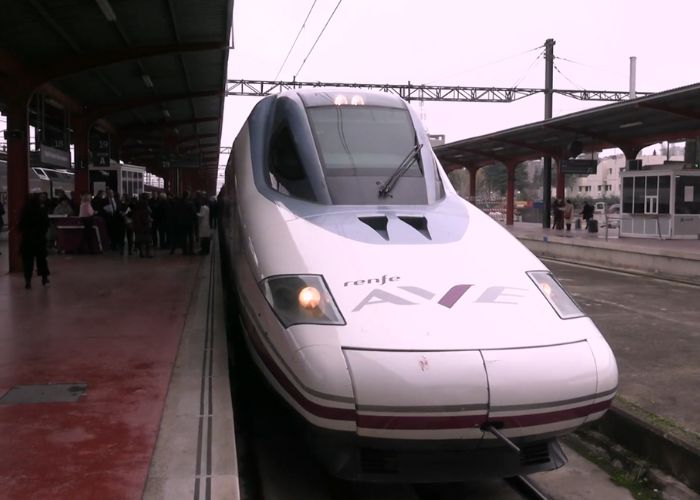MURCIA – The Spanish Prime Minister, together with King Felipe VI and the President of the Region of Murcia, opened the new high-speed train line from Madrid to Murcia on Monday.
Prime Minister Pedro Sánchez stressed that the launch of this line “represents the value of useful politics, connecting areas, thus contributing to Spain’s progress”. He held his speech at Murcia del Carmen station. This was after completing the inaugural journey from Madrid to the region’s capital in southeastern Spain. Other authorities present included King Felipe VI and the Minister of Transport, Mobility and Urban Agenda, Raquel Sánchez.
From Murcia to Madrid in less than 3 hours
The commissioning of the Beniel-Murcia section reduces the travel time of the AVE between Murcia and Madrid to 2 hours and 45 minutes. This involved an investment of more than €410 million, including for the most advanced signaling technology. The high-speed train will make eight trips on the route every day. That equals 2,824 seats.
With this last added section, the entire Levante Corridor, the Madrid-Castilla La Mancha-Valencian Community-Murcia high-speed line, remains in service. From Charmartin – Clara Campoamor station in Madrid, the railway connects the Spanish capital to Murcia via stops in Elche and Alicante.
“Today we are ending an unjustified long-term isolation in terms of rail connections and settling a historic debt with Murcia,” said the head of government.
Commitment to sustainable mobility
Pedro Sánchez has highlighted the unique opportunity presented by the arrival of the AVE in Murcia. He sees these as part of the country’s commitment to sustainable mobility and territorial cohesion through high-speed rail. “Spain is moving forward with brand new infrastructures generating new investments and opportunities. All areas are moving forward. And in doing so we are creating equal opportunities for all our citizens, wherever they live,” he said.
The Prime Minister also noted the government’s determined commitment to the expansion of the high-speed network as a contribution to the ecological transition of technological innovation. In this context, Sánchez also reiterated the importance of measures such as the free travel card for commuters on medium-distance trains. Almost 2.5 million passengers have already benefited from this. In addition, this has reduced emissions into the atmosphere by one million tons of CO2.
A paradigm shift in mobility
“The free subscription represents a paradigm shift in mobility and also protects the social majority in a context of uncertainty,” the government president stressed. He immediately took the opportunity to announce the extension of the free subscription from January 1, 2023, for regular users of the medium-distance trains between Murcia and Alicante.
Important impulse for the Mediterranean Corridor
The inauguration of the Madrid-Murcia high-speed line also means a new impetus for the Mediterranean Corridor, which is progressing in its development towards Cartagena and Almeria. According to the prime minister, that is a “strategic priority” that has now progressed with funding and resources because there is a political commitment from all government administrations.
Mediterranean corridor
In this regard, Sánchez highlighted the record investment of just over €1.7 billion included in the 2023 general state budget for the development of the Mediterranean Corridor. “This is an infrastructure that says a lot about the country we want to be,” the president said.
With the commissioning of the Beniel-Murcia section, Spain is strengthening its position as a global reference for major rail projects. It also reaffirms its leadership as a European country with the most extensive high-speed network, with more than 4,000 kilometres. In the past 4.5 years, this has been extended with eight new rail connections. The country now has 50 stations with high-speed service.
Renfe has already sold 10,600 tickets for the new Madrid-Murcia AVE in the first 20 hours. The first tickets were for travel between December 20, the first day of the service, and January 30, company sources said in a statement.
The arrival of the railway was accompanied by protest
The arrival of the AVE in Murcia has been accompanied by a lot of protests from citizens. Initially, the railway was to cut off an entire residential area from the centre of the city. In addition, there was the proposal of a noise barrier next to it, 9 kilometres long and 5 metres high. But this would more or less have divided the city in two. Consequently, it was decided to make the last part of the railway underground.


